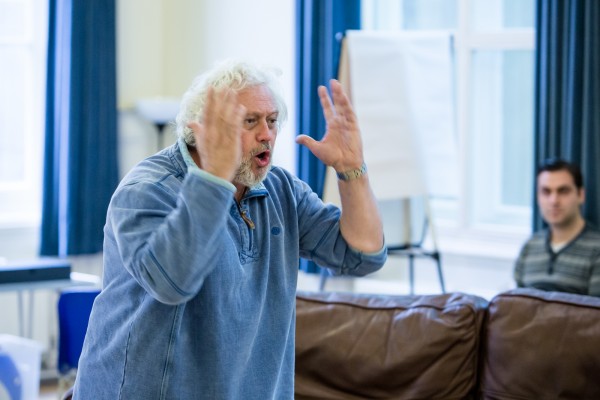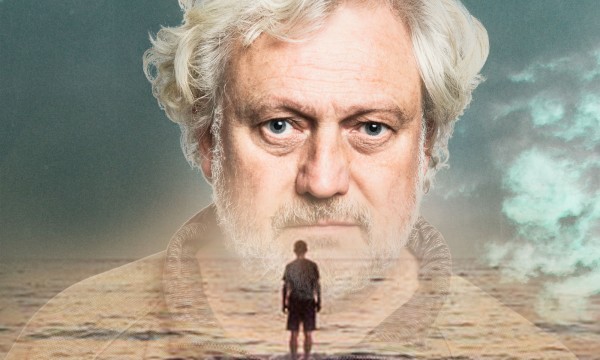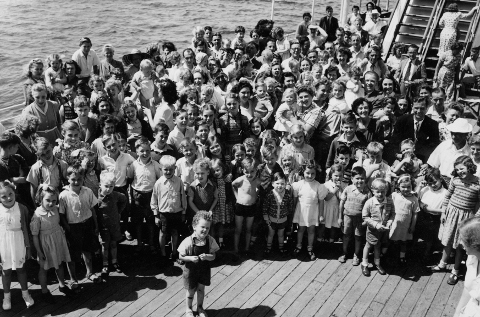‘Good white British stock’ British Child Migration and the ‘White Australia’ Policy
Fri 04 Dec 2015 |
Our Plays, The Bigger Picture
Forget Me Not by Tom Holloway follows the story of Gerry, a British child migrant to Australia who was taken from his mother, shipped to Australia and told he was an orphan. The play explores the devastating effects this has on Gerry, as he begins to discover the truth about his past.
What do we know?
Between 1945 and 1968 over three thousand British children were told they were orphans and sent to Australia on a promise of warmth, fresh air, abundant food and opportunity. Instead they arrived to deprived institutions where neglect and abuse were the norm.
Why would anyone want to do this to small and vulnerable children?
It turns out it has a whole lot to do with empire and race.
In fact a key motivation for child migration was to maintain the racial unity of the British Empire. The Australian Government’s ‘White Australia’ policy was similarly designed to preserve the cultural and racial unity of Australia’s settler population.

In Forget Me Not Russell Floyd plays Gerry, a victim of the British Child Migration Policy
The First World War acted as a powerful stimulus to increase Australia’s small population by immigration. Around 60,000 Australian troops died and needed to be replaced if birth rates were to be maintained. In the 1920s in New South Wales, fears about the proximity of the massive populations of Asia encouraged supporters of Barnardos to build institutions, including a Farm School, so that child migrants of ‘good white British stock’ could help to boost Australia’s population.
These schemes received financial assistance from the British Government’s Empire Settlement legislation. The children were seen as ‘bricks for Empire building’ who would strengthen Australia’s traditional close ties with the United Kingdom.
British child migrants were also sent to other parts of the Empire, chiefly Canada, South Africa, and Zimbabwe (known as Rhodesia at the time). In 1925, child migration from Britain to Canada was stopped following an official inquiry prompted by extremely serious concerns about the ill-treatment of child labourers and the suicide of some child migrants. It was considered that children of below school leaving age were too exposed to the risks of exploitation and abuse.
However, Australia chose to continue to recruit these very vulnerable children.
“At a time when empty cradles are contributing woefully to empty spaces, it is necessary to look for external sources of supply. And if we do not supply from our own stock we are leaving ourselves all the more exposed to the menace of the teeming millions of our neighbouring Asiatic races.” His Grace the Archbishop of Perth, 1938.
The Second World War reinforced widespread anxieties about Australia’s isolated geo-political position and small vulnerable population. The fall of Singapore and the bombing of Darwin confirmed that fears of external aggression and invasion were not the product of fevered imaginations but deadly realities which demanded effective remedies. Consequently, internal factors such as the impact of the 1930s Depression and the loss of troops in two World Wars combined with external threats to generate the post-war slogan: ‘populate or perish’.
Government sponsored large-scale immigration played a key role in Australia’s post-war plans to defend the nation and rebuild the economy. Immigrants from Europe, especially from the United Kingdom, were actively recruited. Child migrants were viewed as the best immigrant – easy to assimilate and accommodate and with a long working life ahead of them

Sarah Ridgeway plays Gerry’s daughter Sally
The Federal Government accepted financial responsibility for the recruitment, medical screening and transportation of all assisted migrants. This included child migrants, who received free passages to Australia, maintenance grants and subsidies towards approved capital expenditure, including buildings erected by approved voluntary agencies. The Federal contribution was dominant as it included both capital and maintenance grants while the State and British Governments also made smaller contributions.
The active and positive role of the Federal Government was underlined by Arthur Calwell in 1946 when he stated, “no country needs immigrants of the right type more than does Australia. And no country has taken more energetic steps to secure them.” Consequently, Australia recruited far more British child migrants in the post-war period than any other country.

Forget Me Not by Tom Holloway – to find out more click here.
Sources:
Main image
Child Migrants Trust – Submission to the Senate Community Affairs References Committee Inquiry into Child Migration






